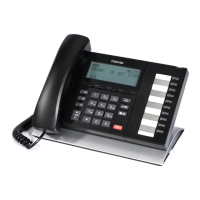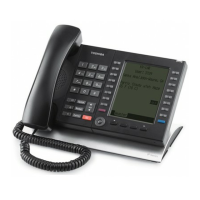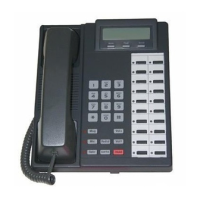Installation Manual June, 2011 3-1
Chapter 3 – Network Requirements
The following list is the IPedge network characteristics required for a
successful system implementation.
Important! Toshiba recommends a through network assessment
using Pathview, AppCritical or similar tool. During and
after installation setup network monitoring with a tool
such as What’s up Gold, Solarwinds or, IPSLA.
The following servers must be available to the IPedge server.
DNS - The enterprise name assigned to the primary node must be
registered with the DNS service. Toshiba recommends that the IPedge
server name(s) be registered with the DNS. If equiped, the IPedge
Meeting names must be registered with the DNS.
NTP - A network time protocol service must be assigned to keep the
nodes synchronized. The IPedge servers will ship with a default NTP
service pointer (pool.ntp.org). Toshiba recommends that time server pool
be referenced, not a single server.
The Network Time Protocol (NTP) is a protocol for synchronizing the
server clocks on a data network. NTP uses UDP on port 123 as its
transport layer.
LAN REQUIREMENTS • Two Static IP addresses
– IPedge server LAN connection
– IPedge Server IPMI connection
• Network Reliability (at the server level): 99.99%
• POE for IP telephones is recommended
• Layer 3 voice prioritization strongly recommended
– Layer 3: DiffServ: Enabled / ToS
– Type:DSCP / DSCP for Voice: 46
• Layer 2 can also be supported
– Layer 2: 802.1p/802.1q(VLAN)
• 88kbps (G.711 audio) in each direction per simultaneous call
• Less than 20ms latency
• Jitter: 10ms or less (+/- 5msec)
• Packet Loss: <0.1%.
• Full Duplex on all ports
• Network topology diagram

